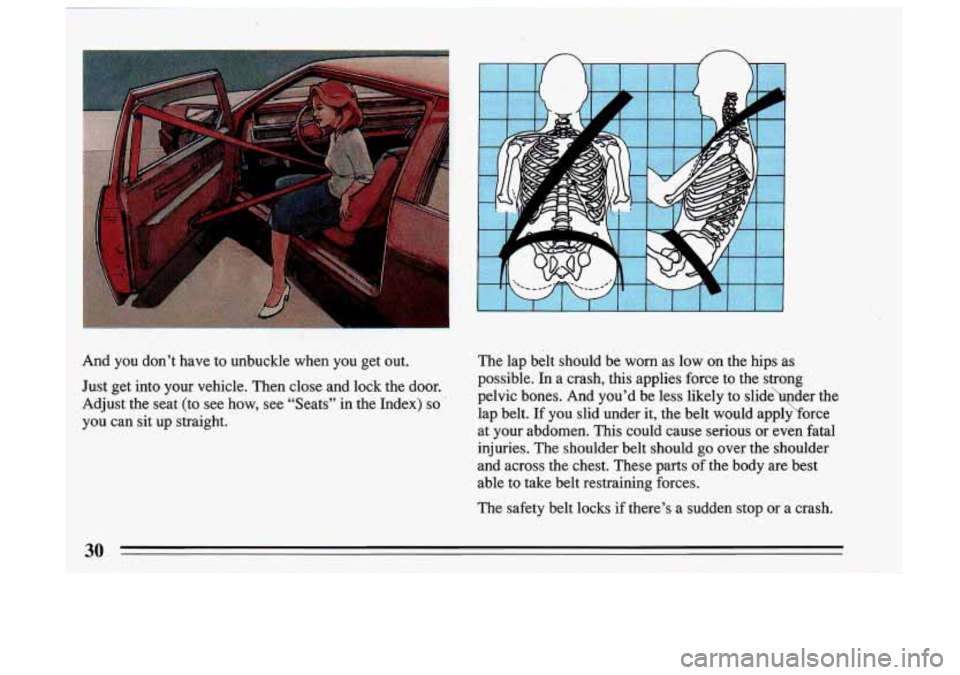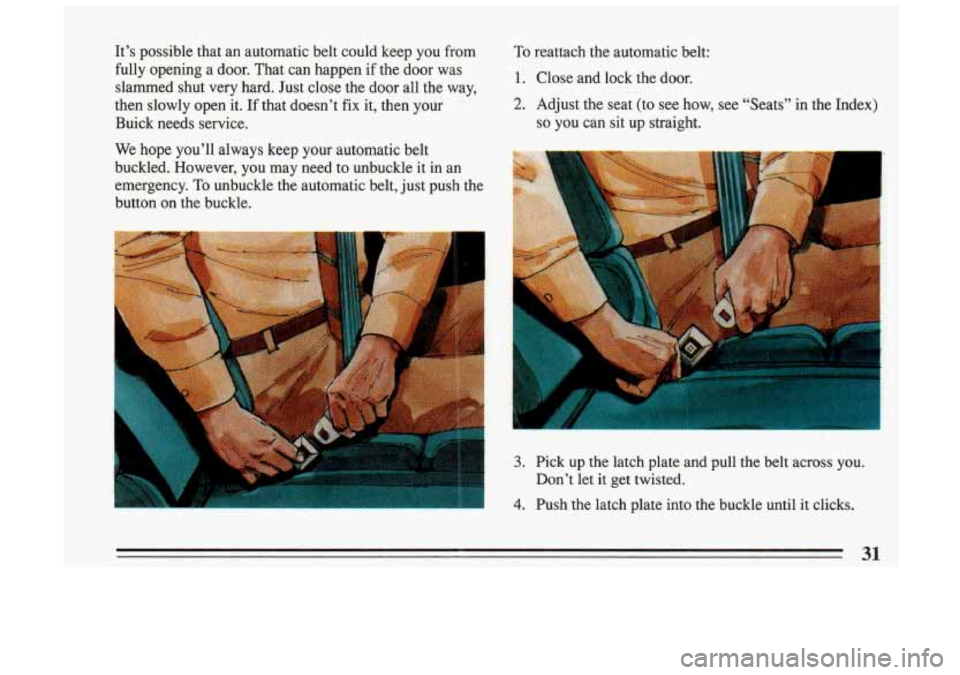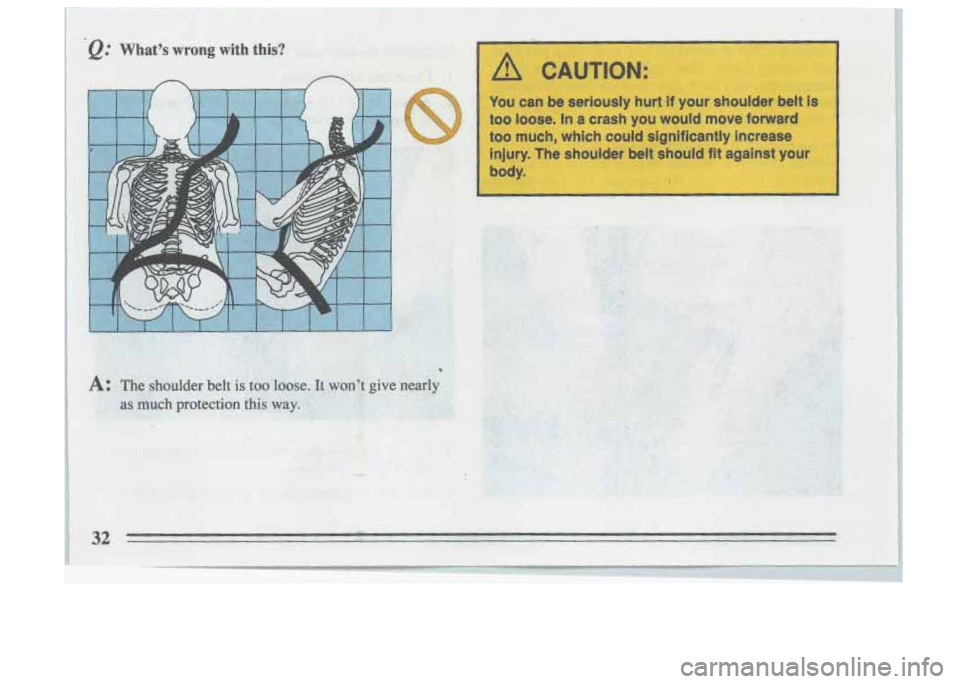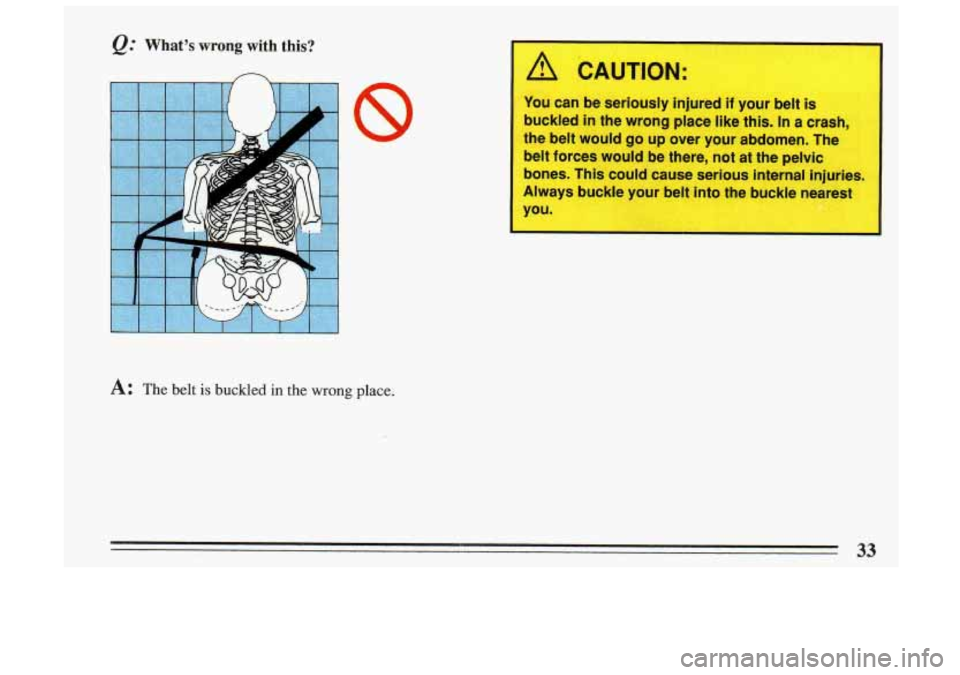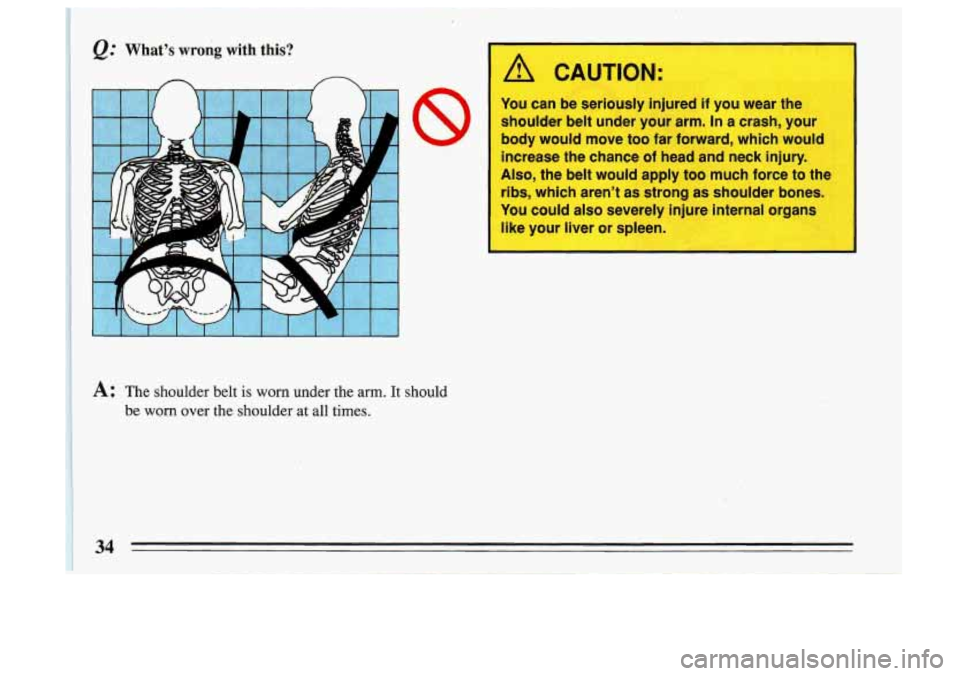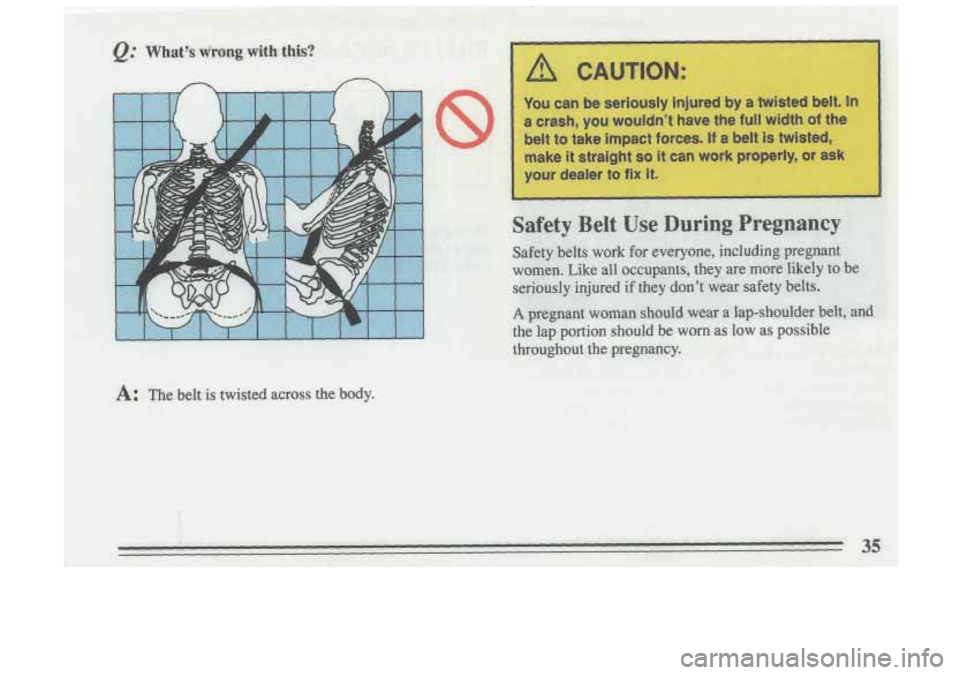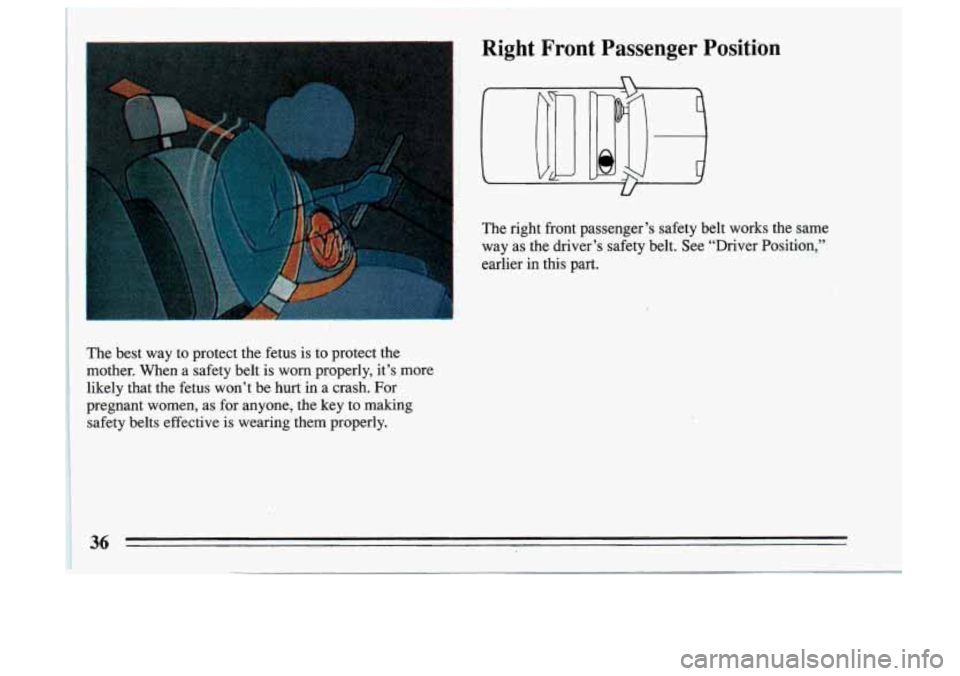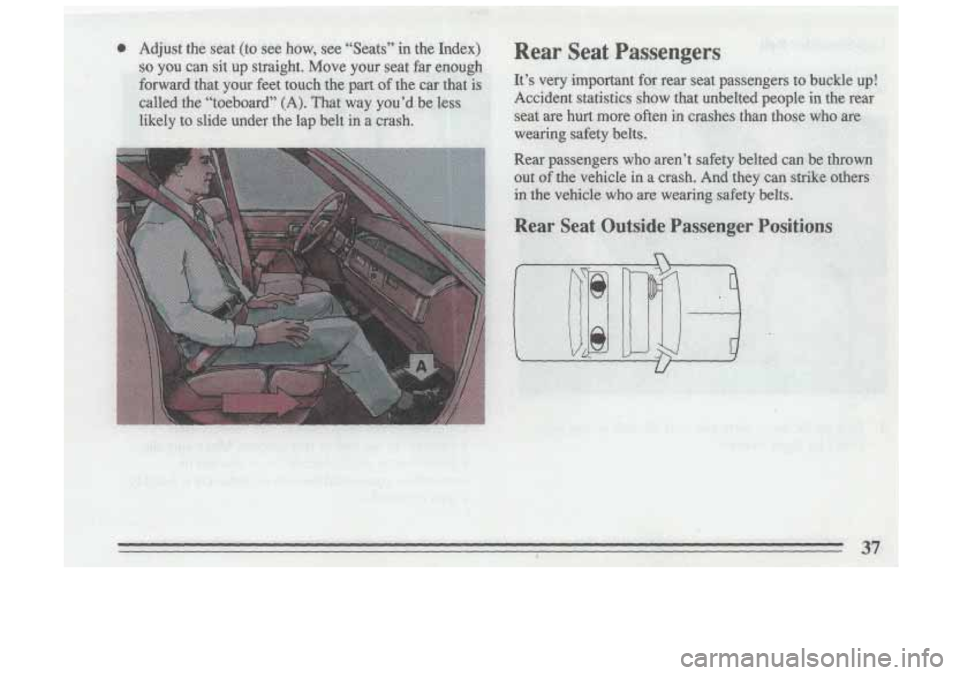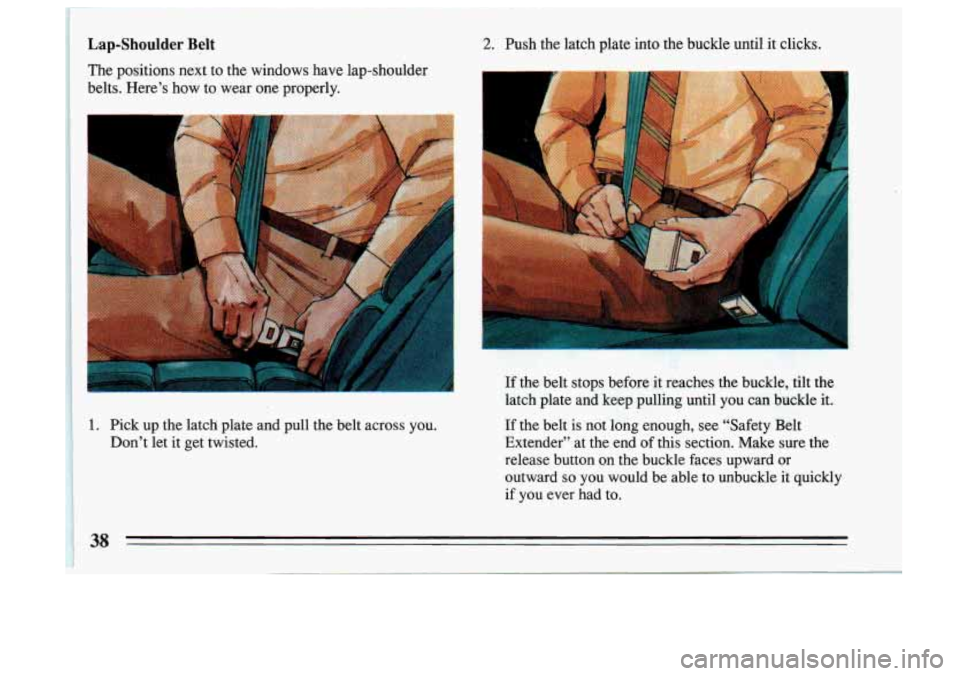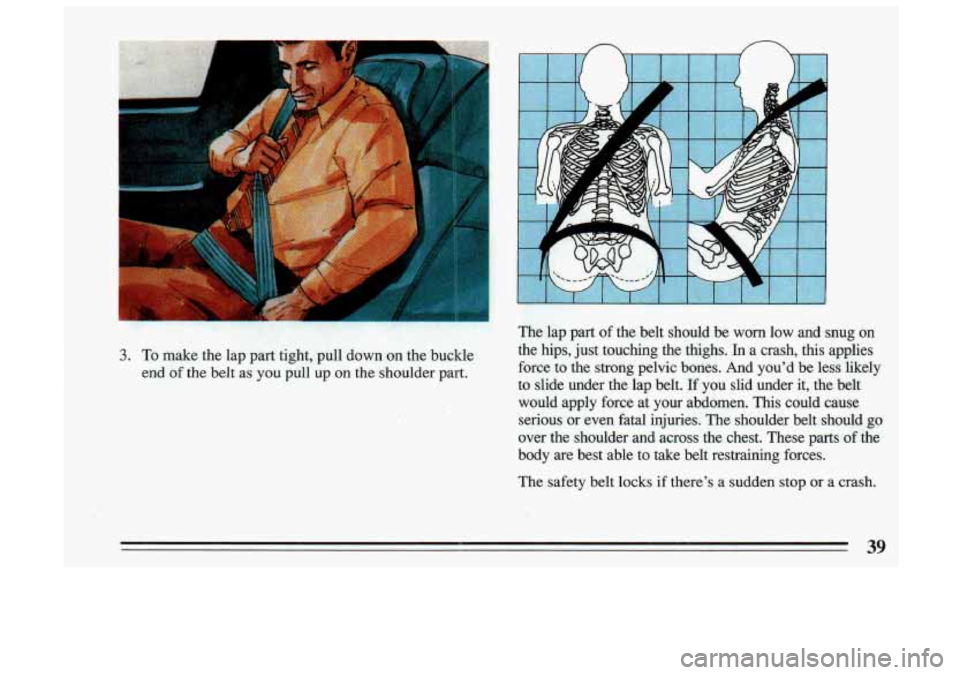BUICK SKYLARK 1993 Owner's Guide
SKYLARK 1993
BUICK
BUICK
https://www.carmanualsonline.info/img/43/57703/w960_57703-0.png
BUICK SKYLARK 1993 Owner's Guide
Trending: headlights, radiator cap, oil dipstick, maintenance schedule, remote start, fog light, open hood
Page 31 of 306
n
And you don’t have to unbuckle when you get out.
Just get into your vehicle. Then close and lock the door.
Adjust the seat (to see how, see “Seats” in the Index)\
so
you can sit up straight. The lap belt should be
worn as low on the hips as
possible.
In a crash, this applies force to the strong
pelvic bones. And you’d be less likely to slide
lap belt.
If you slid under it, the belt would apply Y orce the
at your abdomen. This could cause serious or even fatal
injuries. The shoulder belt should
go over the shoulder
and across the chest. These
parts of the body are best
able to take belt restraining forces.
The safety belt locks if there’s a sudden stop or a crash.
30
Page 32 of 306
It’s possible that an automatic belt could keep you from
fully opening a door. That can happen if the door was slammed shut very hard. Just close the door all the way,
then slowly open it. If that doesn’t fix it, then your
Buick needs service.
We hope you’ll always keep your automatic belt
buckled. However, you may need to unbuckle
it in an
emergency.
To unbuckle the automatic belt, just push the
button on the buckle.
To reattach the automatic belt:
1. Close and lock the door.
2. Adjust the seat (to see how, see “Seats” in the Index)
so you can sit up straight.
3. Pick up the latch plate and pull the belt across you.
Don’t let it get twisted.
4. Push the latch plate into the buckle until it clicks.
31
Page 33 of 306
/I CAUTION: I
You can be seriously hurt if your shoulder belt is I
too loose. In a crash you would move forward
too much, which could significantly increase
injury. The shoulder belt should fit against your
body.
&gpE? &;?::
Page 34 of 306
@ What’s wrong with this?
n
A: The belt is buckled in the wrong place.
1 /i CAUTION:
L
~ You can be seriously injured if your belt is
buckled in the wrong place like this.
In a crash,
the belt would go up over your abdomen. The
belt forces would be there, not at the pelvic
bones. This could cause serious internal injuries.
Always buckle your belt into the buckle nearest
you.
33
Page 35 of 306
@’ What’s wrong with this?
n A CAUTION:
You can be seriously injured if you wear the
shoulder belt under your arm.
In a crash, your
body would move too far forward, which would
increase the chance
of head and neck injury.
Also, the belt would apply too much force to the
ribs, which aren’t as strong as shoulder bones.
You could also severely injure internal organs
like your liver or spleen.
Page 36 of 306
Page 37 of 306
I
Right Front Passenger Position
The right front passenger’s safety belt works the same way as the driver’s safety belt. See “Driver Position,”
earlier in this part.
The best way to protect the fetus is to protect the
mother. When a safety belt
is worn properly, it’s .more
likely that the fetus won’t be hurt
in a crash. For
pregnant women, as for anyone, the key to making
safety belts effective
is wearing them properly.
36
I
Page 38 of 306
Page 39 of 306
Lap-Shoulder Belt
The positions next to the windows have lap-shoulder
belts. Here’s how to wear one properly.
I
1 1. Pick up the latch plate and pull the belt across you.
1 Don’t let it get twisted.
2. Push the latch plate into the buckle until it clicks.
If the belt stops before it reaches the buckle, tilt the
latch plate and keep pulling until you can buckle it.
If the belt is not long enough, see “Safety Belt
Extender’’ at the end of this section.
Make sure the
release button on the buckle faces upward or
outward
so you would be able to unbuckle it quickly
if you ever had to.
I 38
Page 40 of 306
n n
..
3. To make the lap part tight, pull down'on the buckle
end
of the belt as you pull up on the shoulder part.
The safety belt
locks if there's a sudden stop or a crash.
39
Trending: engine coolant, ABS, spark plugs replace, oil type, hood open, brake sensor, sensor
